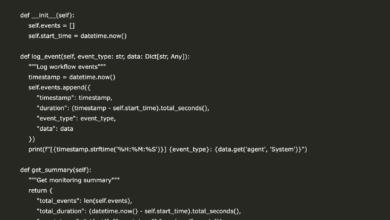Distributed Computing

What is the distributed computing?
Distributed computing is a model in which computers or contracts interconnected together to solve complex problems by dividing tasks into smaller tasks. Each knot works independently but cooperates with others, allowing the participation of effective resources and parallel treatment. This approach is ideal for large -scale tasks such as processing huge and high -performance data that exceeds the capabilities of one device.
Species Distributed computing
Customer servant structure
a description: In this model, customers request services from servers, which provide the necessary resources or treatment force. It is widely used in web applications and institutions.
Using casesWeb applications, database access, and network services.
Architecture
a description: P2P systems are not central, allowing each knot to work as a customer and server. This architecture is usually used to share files and distribute content.
Using casesFile sharing networks such as BitTorrent and Blockchain Networks.
a description: This structure separates the applications to three layers: view, application and data. It enhances the ability to expand and maintain by allowing the adjustment of each layer independently.
Using casesWeb applications, e -commerce platforms.
a descriptionExtending the three -level model, NI -Systems N Systems can have a number of them, each of which provides a specific function. This structure is used in complex web applications and institutions systems.
Using casesWide -range web applications, institutional program systems.
a description: The intermediary works as a mediator between different applications or systems, allowing communication and data exchange via different platforms.
Using casesMerging old systems, exchanging data across platforms.
a descriptionNetwork computing connects multiple computers across different sites to form a virtual supercar, and is often used in scientific research and complex accounts.
Using casesScientific simulation operations, intensive research projects.
a description: Cloud computing provides access to request to a joint set of computing resources, such as servers, storage and applications. It is a form of distributed computing that supports expansion and flexibility.
Using cases: Developable web applications, data storage solutions.
The importance of distributed computing
The ability to expand and flexibility
roleDistributed systems can easily expand or down by adding the contract or removing the contract as needed. This flexibility allows them to deal with the increasing work burdens efficiently without great promotions of devices.
Using casesDealing with large quantities of data in actual time, and adapting to mathematical requirements.
Improving performance and efficiency
role: By dividing tasks into smaller tasks and synchronizing them through a multiple contract, distributed computing significantly reduces the time of processing and improve resource use.
Using casesComplex scientific simulation, huge data analysis, and actual time data processing.
Carrying the error and reliability
roleDistributed systems are flexible because they can continue to operate even if some contract fails. This ensures high availability and reliability, which makes it suitable for important applications.
Using casesImportant systems, cloud services and data centers.
roleDistribution of data through a multiple contract that makes it difficult for infiltrators to access all data simultaneously, which enhances security against electronic threats. In addition, it guarantees the repetition of repetition and reduces the risk of data loss.
Using casesData storage solutions insurance, protection from data violations.
roleDistributed computing can use low -cost devices and reduce the need for expensive central systems. It also improves the use of resources, which leads to cost savings over time.
Using casesReducing server costs in data centers, and improving resource customization.
Transparency and management
roleDistributed systems can provide resources as if they were central, which simplifies the user interaction and management. This transparency provides the easiest management of complex systems.
Using casesSimplify access to distributed databases, and management of hybrid cloud environments.
Using cases Distributed computing
a description: Financial institutions use the distributed to risk management, fraud detection, and high -speed economic simulation. It helps in analyzing huge amounts of market data and customer transactions in actual time, allowing informed investment decisions and preventing fraud.
ExamplesTreating transactions in real time, and evaluating the risk of wallets.
a descriptionUses cloud services such as AWS and Google Cloud computing distributed to provide developmentable, reliable and cost -effective computing resources. This setting allows companies to store and process data via multiple servers in different locations.
Examples: Developable web applications, data storage solutions.
a description: The computing distributed in the Internet of Things is used to manage and process data from smart devices. It is applied to smart home systems and industrial Internet applications to enhance efficiency and automation.
ExamplesSmart home automation, industrial monitoring systems.
a description: The computing distributed in smart network technology is used to improve energy consumption and integrate renewable energy sources. It also helps in environmental monitoring by analyzing satellite data.
ExamplesReal time management, climate modeling.
Social networks and online services
a description: Social media platforms and online services use systems distributed to deal with high traffic and large quantities of data. This ensures that the services remain available even if one server fails.
Examples: Facebook and Twitter and online banking systems.
a descriptionOnline Multiplayer games (MMOGS) depends on the computing distributed to create environments in the actual overwhelming time. This allows thousands of players to interact simultaneously.
ExamplesWorld of Warcraft, League of Legends.
a descriptionComputing distributed in scientific simulations, such as climate modeling and genetic structure analysis. It speeds up complex accounts by distributing tasks through multiple machines.
ExamplesClimate modeling, drug detection research.
a descriptionDistributed computing helps to manage stocks contradictions and support distributed request management systems (DOMS) in retail. This guarantees smooth operations via online and unconnected channels.
Examples: Inventory management, loyalty systems.
Common questions from distributed computing
What are the main characteristics of distributed systems?
The main characteristics include Synchronization (Multiple ingredients are carried out simultaneously), independence (The ingredients operate independently), communication (Ingredients exchange information over the network), Transparency (Users are not aware of the distributed nature), and Tolerance with error (The system continues to operate despite the failure of the ingredients).
What are the main advantages of distributed computing?
It includes advantages Increased performance (Faster treatment through parallel implementation), Expansion (Easily add more nodes to deal with the increasing work burden), Tolerance with error (The system remains practical even if some contract fails), and Cost effectiveness (Effective use of resources).
What are the types of structures used in distributed computing?
Includes joint structures Customerand Three levelsand n-tierAnd peer to peer. Each structure is suitable for different applications and cases of use.
How is the computing distributed from cloud computing?
Although both include multiple computers, cloud computing usually indicates services provided online, while distributed computing is a broader concept that includes different network systems.
What are some common challenges in implementing distributed computing?
The main challenges include a guarantee The consistency of dataAdministration Network connectionsAnd maintenance protection Through the distributed contract.
What are the tools and techniques used in distributed computing?
Common tools include Apache Kafka for data processing in actual time, Apache Cassandra for developmentable data rules, and Kubernetes for container format.
Is it possible to use computing distributed for small projects?
Yes, distributed computing can be developed and can be adapted to projects of different sizes, including small applications.
For the latest news, exclusive and videos on WhatsApp
2025-04-07 17:56:00




